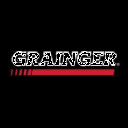Overall, Grainger demonstrates a strong business model with significant investments in technology and customer service. However, challenges related to economic conditions and potential tariff impacts create a cautious outlook for future growth.


 10Y annualized return is
excellent
at 16.9% per year
10Y annualized return is
excellent
at 16.9% per year
 GWW has met or exceeded earnings expectations in
the majority of
recent quarters (7/10)
GWW has met or exceeded earnings expectations in
the majority of
recent quarters (7/10)
 Strong Return on Equity
Strong Return on Equity
 Solid Profit Margins
Solid Profit Margins
 High Price-to-Earnings Ratio
High Price-to-Earnings Ratio
 Dependence on Economic Conditions
Dependence on Economic Conditions
Get access to all key takeaways, detailed financial metrics, and comprehensive stock analysis with our premium subscription.
Already have an account? Sign in
Overall, Grainger demonstrates a strong business model with significant investments in technology and customer service. However, challenges related to economic conditions and potential tariff impacts create a cautious outlook for future growth.
Analysis Date: January 31, 2025
Last Updated: May 29, 2025
Past performance does not guarantee future results. The data presented is indicative and may not be updated in real-time.
W.W. Grainger, Inc. is a company that helps businesses and organizations get the supplies they need to keep things running smoothly. They sell a wide range of products like safety gear, tools, cleaning supplies, and equipment for handling materials. Grainger also provides services to help companies manage their inventory and find technical support. Founded in 1927, they operate in several countries, including the U.S., Canada, and Japan, making it easy for customers to order what they need online or through sales representatives.
Streams of revenue
Geographic Distribution
Core Products
Business Type
 Business to Business
Business to Business
Competitive Advantages
Discover all competitive advantages and strategic moats that protect GWW's market position.
View Premium AnalysisKey Business Risks
Get comprehensive insight into all key business risks that could impact GWW's performance.
Access Full Risk AnalysisTrailing Twelve Months (TTM) values provide a view of the company's performance over the last year.
Benjamin Graham's value investing approach focuses on finding stocks with a significant margin of safety between their intrinsic value and market price.
Access Benjamin Graham's value investing criteria, intrinsic value calculations, and margin of safety analysis
Trailing Twelve Months (TTM) values provide a view of the company's performance over the last year.
Profitability metrics measure a company's ability to generate earnings relative to its revenue, operating costs, and other relevant metrics. Higher values generally indicate better performance.
Access detailed profitability metrics with visual gauges and benchmarks
Access detailed analysis of profitability strengths and positive performance indicators
Upgrade to PremiumAccess detailed analysis of profitability weaknesses and areas of concern
Upgrade to PremiumFinancial health metrics assess a company's ability to meet its financial obligations and its overall financial stability.
Access detailed financial health metrics with visual gauges and risk assessments
Access detailed analysis of financial health strengths and stability indicators
Upgrade to PremiumAccess detailed analysis of financial health weaknesses and risk factors
Upgrade to PremiumMeeting Expectations
Higher values indicate better execution and credibility
Recent Results
View complete earnings history and detailed performance analysis
Upgrade to PremiumEPS
Revenue
Insider trading data shows purchase and sale activities by company executives and board members.
Insider trading patterns can provide insights into how company executives and board members view the stock's future prospects.
Get complete insider sentiment analysis with detailed trading patterns, sentiment indicators, and trend insights